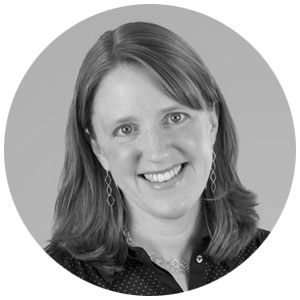BLOG
How Can Stormwater Be Smart?
Written by Deb Sahoo and Nadja Turek

In today’s world, it seems like everything is smart. Smart phones. Smart cars. Smart homes. Smart buildings. But what does that label “smart” really mean? And how can we apply it to our communities and environments?
Gone are the days when smart referred to humans and their intellectual prowess. Currently, smart refers to a level of unprecedented connectivity made possible by the Internet of Things (IoT). Most anything can be called smart if it can access the internet, network with other devices and analyze data to aid in decision-making.
Cities are trying to keep up with the smart trend by applying the advancing technologies to their large systems, including infrastructure. Smart cities use a variety of sensors and platforms to leverage the IoT for managing their diverse assets. By employing artificial intelligence (AI) and machine learning (ML), they are training their systems to optimize resources and improve citizen quality of life.
Stormwater infrastructure is one of the last citywide systems to reap the benefits of the smart revolution. While the historic purpose of stormwater infrastructure has been to move excess rainfall away from populated areas as quickly as possible, the potential for additional utility is great. For example, sensors placed within the stormwater infrastructure system can be used to communicate and evaluate data about water quality, flow and availability, as well as provide critical pre-flooding alerts.
Smart systems, regardless of the application, require smart solutions. For watersheds and stormwater infrastructure to best capitalize on the IoT, they must utilize a continuous monitoring and adaptive control (CMAC) system. CMAC system solutions incorporate sensors, weather information, data analytics, AI and ML with cloud or on-site technology to give life to “dead” stormwater infrastructure. These solutions combine the constant feed of monitoring data with weather forecasts to aid in flood control and increase water quality, thereby helping cities become more resilient to natural calamities.
Throughout the country, cities have begun adopting IoT-based solutions for managing their watersheds and stormwater more intelligently—and effectively. Here are just a few examples (courtesy of the Water Environment Federation):
- The city of Chicago developed a CMAC system to support its Smart Green Infrastructure Monitoring program. Communicating via the internet, infrastructure-monitoring sensors feed a user-friendly dashboard with real-time environmental data sets.
- Milwaukee’s CMAC system was developed to monitor the performance, operation and maintenance of the city’s green infrastructure.
- Philadelphia implemented an IoT-based CMAC system to mitigate combined sewer overflow issues. The CMAC analytics have resulted in over 90% reduction in wet weather flows to the combined system.
- The CMAC system implemented in Lenexa, Kansas, is improving water quality and reducing flooding through proactive flow control. Combining sensor information with weather forecasts, the CMAC predicts potential flooding and triggers the release of retention waters ahead of storms.
Woolpert has pioneered the implementation of these smart sensors and IoT-based real-time solutions to monitor aquatic systems. By viewing water flow and quality data sets in real-time dashboards, we gain a much better understanding of stormwater’s widespread impact.
As we stand at the cusp of the full integration of real-time monitoring and CMAC-based stormwater systems, we once again redefine smart. Today’s definition: to use a network of devices to benefit the network of watersheds—and the human network.

Deb Sahoo, PhD, PE, PH
Dr. Deb Sahoo lives in the big data world of water quality. He dives deep into high-frequency water data, building water quality computer models to better understand the impact of stormwater and human development on water bodies. Deb is interested in real-time environmental systems and analytics; he also teaches, mentors and collaborates with researches at local universities, and he has worked closely with the U.S. EPA to address water quality issues.

Nadja Turek, PE, F. SAME, LEED AP BD+C, GGP, Envision SP
Nadja Turek, a civil engineer and sustainable design expert, serves as Woolpert’s Research and Development Facilitator. As a former faculty member at the University of Dayton and the Air Force Institute of Technology, she is a sought-after teacher and speaker. Nadja has provided sustainability training to over 1,000 designers and engineers and given numerous presentations as a sustainable design expert. She currently serves as an Advocacy Chairperson for USGBC’s Cincinnati Chapter.